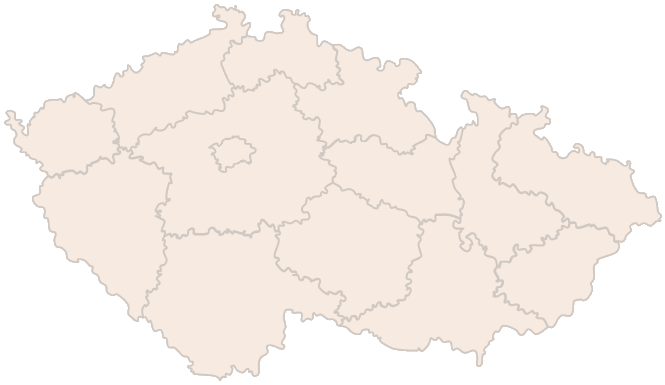Distance adoption most often focuses on helping children from India, African countries, Ukraine or Belarus. There is also a programme to support the descendants of Tibetan refugees who have settled in the northern part of India. There are a number of organisations that facilitate long-distance adoption and, of course, they all take the precaution of ensuring that their assistance is as targeted as possible and that it is for the education and development of the children. So how to go about choosing the right one? Let’s take it one step at a time.
What exactly is distance adoption?
The term “adoption” can be a little misleading in our context. It refers to the relationship between the surrogate parent and the child. In reality, it is a very symbolic adoption. It consists “only” of financial support and written communication with the child. There is usually no real contact. The sending of gifts and communication other than in the prescribed form is usually restricted. In English-speaking countries, the more appropriate term for this relationship is ‘child sponsorship‘.
Long-distance adoption is sometimes referred to as a form of international long-distance adoption because the intended recipients of the assistance tend to be children from abroad. Unlike a true international adoption, in which the child becomes part of a new family and their legal status changes, this involves only financial support and maintaining contact through letters or photographs.
What does distance adoption obligate me to do?
Unlike a regular adoption, you are not necessarily committing to helping the child until they are an adult. Rather, distance adoption involves a long-term commitment and a willingness and desire to support the child throughout his or her studies, but if you suddenly have insufficient funds or change your mind about this type of help for another reason, you can end it earlier.
What are the types of distance adoption?
Classic distance adoption – you can choose the country you are supporting, the gender or age of the child on the website of one of the charities and then choose the one that appeals to you most by looking at the individual stories, accompanied by photos of the children.
Developmental adoption – a concept that focuses on supporting a specific institution (typically a school) which then provides free education to the children. The money raised, in addition to running the school itself, can be used to purchase important equipment, supplies, cars, etc. This removes the need to fund the intermediate funding of an on-site aid organisation, which may also take a significant portion of your money to run.
Tip for article
Tip: There are many ways to help children. If you have the ability and desire to physically care for someone else’s child, you can explore foster care options .
Are you solving a similar problem?
Are you dealing with an issue regarding long-distance adoption?
If you are looking for an answer to a specific legal question, email us and you will have an answer from one of our attorneys within 48 hours.
I want help solving my problem
- When you order, you know what you will get and how much it will cost.
- We handle everything online or in person at one of our 6 offices.
- We handle 8 out of 10 requests within 2 working days.
- We have specialists for every field of law.
Can long-distance adoption ever be harmful?
The term “harm” is definitely way over the line. However, help is not always completely effective. By selecting only one child from a family or an entire village for adoption, for example, rivalry, resentment or envy can manifest itself on the part of other siblings or classmates. And if you cannot influence the selection of children suitable for sponsorship, you never know whether political or religious affiliation, which is consistent with the activities of the helping organization, may have been a factor.
Consequently, much also depends on the sensitivity and attitude of the sponsor, or if you prefer, the adopter. The social, cultural and economic differences between our world and that of the adopter are abysmal. So it certainly doesn’t help the cause to send photos of expensive vacations and close-ups of a world that a child from a developing area may never know. At the same time, it may create a certain expectation in the child that his sponsor would be able to convey all this to him as well.
Developmental adoption, which does not single out one particular child, but supports all children within an institution across the board, can help address some of these inequities.
How to choose a helping organisation?
A person ready to help, upon arriving at the website of a helping organization, can be swept away by the whirlwind of sad stories and photos of beautiful children experiencing them. We don’t want to make light of their difficult situation and their need for help in the slightest. If you are deciding whether to choose long distance adoption or traditional international adoption, you need to consider the level of responsibility and involvement. While true international adoption requires a demanding administrative and personal process and often fundamentally changes the lives of both parties, long-distance adoption is a less binding but still very rewarding way to help.
We just recommend that you don’t be immediately swayed by emotions and always check:
Help organizations in the Czech Republic
Does it exist legally and is it registered in the commercial register? Are there no scandals, bad experiences or even foreclosures associated with it?
Most adoption programs are run by well-known and proven charities such as the Archdiocesan Charity of Prague or Olomouc or Brontosaurus in the Himalayas, but you may come across the name of a company you have never heard of. Then caution is in order.
Tip for article
Tip: We have covered the screening of the insolvency register and other registers for debtors in a separate article.
An organisation working at the aid site
Here, you sometimes have no choice but to rely on the guarantee of a Czech guarantor. However, you can usually find the website of the local organisation or the experience of other sponsors.
Ratio of funds going directly to those in need vs. the cost of running the organisation
This is a very important point in the whole process. Ideally, organizations should draw their operating costs from other sources and your money should go directly to the child. However, this is not likely to be encountered in practice. Therefore, at least choose organisations that do not ‘swallow’ most of the costs. Transparent organisations should disclose the ratio of the amount going to the child to the amount going to their operations.
Keep the data up to date on the organisations’ websites.
“He was born in 2002 and is now 16 years old.” This is also what we could read in January 2022 for the profile of one of the children on the helping organization’s website. This was not an isolated typo. The call for letters by March 2019 and a number of other pieces of information of this type did not exactly inspire confidence. Upon our inquiry, the organization apologized for the site’s inaccuracy to a colleague’s maternity leave, but it is a matter of consideration whether to associate its financial assistance with someone so non-transparent.
What country will the aid be going to?
Some organisations focus on aid in one specific country, others cover multiple countries (or continents). So it is more down to personal preference as to the country and nationality of the child you wish to support. It may be related to your relationship to the country, the current political or socio-economic situation in the area, the possibility of ever seeing the child (e.g. Belarusian children sometimes have exchange visits to the Czech Republic, in India such a procedure is rather impossible and also inappropriate for the reasons mentioned above).
Tip for article
Tip: Are you and your partner considering adopting a child from an orphanage? Or does your partner want to adopt your child from a previous marriage? Learn all about adoption and adoption in our article.
How to proceed in the case of an international adoption?
Once you have found an organisation that suits your activities and focus, you can select the child you want to help on the website. You fill in a contact form and the organisation contacts you and concludes a contract with you. These are usually form contracts, which do not allow much change and if you do not like the wording, you will have to go to a competitor. However, it is always worth a try to suggest a modification to a clause that you do not entirely agree with. If there’s something you don’t like about the contract or the terms and conditions of the project, don’t be afraid to consult a lawyer. Ideally, this is a multi-year commitment and you probably don’t want to waste your money unthinkingly.
You can then make the full payment for the year or place a standing order for monthly payments. The first letter to the child is usually sent after a few months of your payments so that there is at least some guarantee of the permanence of the sponsorship. In return, “your” child will also contact you about twice a year to share his or her academic performance or other details of his or her life.
With some organisations you can also choose to provide non-addressed support, where financial assistance goes to a particular school in a developing area, for example. Then, in the annual summary report, you will learn about educational programs, new aids for the children and their facilities in general.




